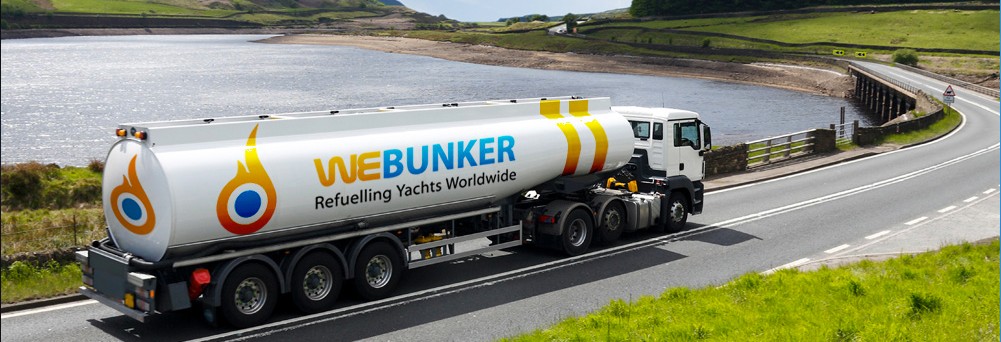Obama’s Call for $10 Oil Tax is DOA

President Barack Obama’s final budget will propose a $10 per barrel oil tax, investing the proceeds in mass transit, high-speed rail, urban planning, highway upgrades and self-driving cars, among other programmes.
“President Obama’s 21st Century Clean Transportation System”, outlined by the White House to reporters on Thursday, drew predictable praise from environmental groups and howls of outrage from oil producers.
But the most important thing to remember about the clean transportation plan is that it stands no chance whatever of becoming law.
Raising revenue and spending money are powers reserved to Congress by the U.S. Constitution. The president can propose but Congress decides (“Constitution of the United States”, Article I, Sections 7 and 9).
The Budget and Accounting Act of 1921 requires the president to submit a unified budget to Congress each year (“Preparation, Submission and Execution of the Budget”, Office of Management and Budget, 2015).
Before the Budget and Accounting Act, agencies sent requests for funding individually to the legislature without central coordination.
The budget last budget, for fiscal 2016, which extends through September 30, and was published in February 2015, ran to 150 pages, plus 364 pages of historical tables, and hundreds of pages more of supporting documents.
But while the president is required by law to submit a unified budget, Congress is under no obligation to enact it or even use it as a starting point for its own deliberations.
Congress jealously guards its control over taxation and expenditure and does not look to the president for leadership in this area.
The White House has difficulty getting Congress to follow its proposals even when both houses are controlled by the president’s own party let alone when they are controlled by his opponents.
The budget is therefore something of an ironic work of fiction, used by the administration to showcase ideas most of which have little prospect of becoming reality.
It sets out a vision of what the administration would like to do if Congress cooperated.
For example the table of contents from the fiscal 2016 version includes sections on “accelerating manufacturing industry growth,” “improving the farm safety net through common sense reforms,” “preparing all students for success in college and careers” and “ending homelessness”.
The budget routinely contains proposals which the administration understands have little or no chance of becoming law.
The special tax breaks available to oil and gas producers have been the subject of controversy since before World War Two (“Energy policy in America since 1945”, Vietor, 1984, pp 224-229).
The Obama administration’s first budget, published in February 2009, proposed to eliminate all the remaining tax breaks, raising an extra $31 billion in revenue between fiscal 2010 and fiscal 2019.
Every year since then, the budget has proposed to repeal these tax breaks, but seven years later they are still there.
The fiscal 2016 budget again proposed eliminating them and in the process raise an extra $42 billion in revenue between fiscal 2016 and fiscal 2025 but was not enacted (“Analytical Perspectives, Budget of the U.S. Government, FY 2016”).
The fiscal 2017 budget will almost certainly include the same proposals, which are no more likely to be enacted than in the previous seven budget cycles.
GASOLINE TAXES
The president’s proposal for a $10 per barrel tax on oil, which the administration calls a “fee”, has even less chance of being turned into law.
“The president is now apparently proposing yet another way of damage our nation’s oil industry,” Alaska Senator Lisa Murkowski, the chairman of the Senate Energy and Natural Resources Committee, complained.
“Fortunately, with Republicans in charge of Congress, Alaskans need not worry about this becoming law,” she added.
The president’s proposal is in many ways an updated version of a very old idea to increase federal taxes on gasoline and diesel as a way to raise revenue, pay for transport infrastructure and promote energy efficiency.
The federal government began collecting taxes on gasoline sales at the rate of 1 cent per gallon in 1932, increased to 2 cents in 1951, 4 cents in 1959, 9 cents in 1983, 14 cents in 1990 and 18.4 cents in 1993 (http://tmsnrt.rs/1TIzcAP).
The government also collects taxes on diesel, as well as on gasohol, compressed natural gas and other special fuels (“Federal Tax Rates on Motor Fuels and Lubricating Oil”, Federal Highway Administration, 2014).
Revenues from fuel taxes are used to pay for maintenance and improvements of highways and bridges through the Highway Trust Fund.
In most cases the rates have remained essentially unchanged since 1993 even though inflation has eroded them in real terms because it has improved impossible to reach a political agreement within Congress to raise them.
The president’s proposal for a $10 per barrel fee on oil is equivalent to an increase in fuel taxes of 22-24 cents per gallon, on top of the existing tax rates.
The proposed raise would be unprecedented in terms of both the size of the increase and the end total tax rate.
POLITICAL THEATRE
There are good arguments in favour of increasing fuel taxes to promote energy efficiency and reduce carbon emissions; the idea was supported by the former head of the International Energy Agency.
In theory, it is much easier to raise taxes when oil prices are low because the cost of fuel is less salient as a political issue.
But given that Congress has not managed to enact any increase in fuel taxes for two decades, it is very unlikely lawmakers would suddenly agree to an effective doubling of the tax rate on gasoline and diesel.
Even the administration does not appear to be taking the proposal seriously.
When asked how the tax would work, the director of the White House economic council said only that it would be paid by oil companies but not at the wellhead where oil is produced.
“We look forward to working through the details with Congress,” he said (“Obama proposes $10 per barrel oil tax”, Financial Times, Feb. 4).
The chances of a Republican-controlled Congress with close ties to oil and gas producers and an aversion to increasing taxes “working through the details” are not significantly different from zero.
The administration is well aware of all this. The president’s clean transportation plan and its $10 oil tax are a piece of political theatre rather than meant to be taken as a serious policy proposal.
Climate change is a legacy issue for the president, an area where the administration wants to show historians it made a real difference.
The clean transportation plan and oil tax are a way of burnishing that legacy and putting the media spotlight on to the administration’s climate policy.
In that sense, they succeeded. Most news outlets dutifully wrote it up and it will now be analysed in detail by policy analysts across Washington.
It could also create a marker for future discussions about increasing gasoline taxes or even introducing an economy-wide carbon tax.
But while the talk of a $10 oil tax may seize the headlines, it has virtually no chance of becoming law in the foreseeable future.






